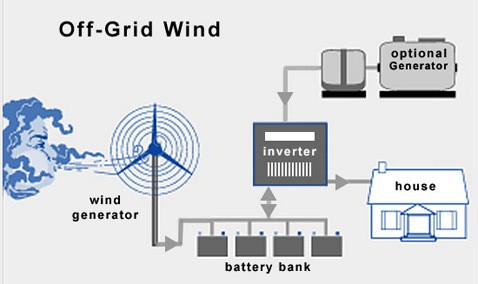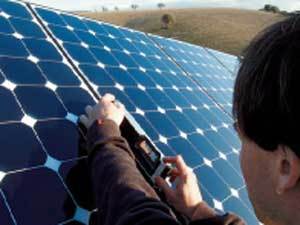

Wind Energy
“The two most abundant forms of power on earth are solar and wind, and they're getting cheaper and cheaper..”
Ed Begley Jr.
Summary of wind turbines pro and cons:
In this articles you'll find out the what, where, why and wind turbines pros and cons as well as reason for and against this up and coming renewable resource.
Every year the ecology of the planet is deteriorating. Natural resources are running out, and as a result, production costs are increasing. It contributes to the development of the alternative energy market. Just a couple of years ago, we could not imagine that renewable power sources would be available to almost everyone. Owning a wind turbines are no longer a luxury, but a standard way to save on utility bills.
In the article, you will find answers to the most popular questions: what is a home wind farm and what are its features; what are wind turbines pros and cons?

What are wind generators for the home?
A wind station is a combination of several wind generators capable of converting the kinetic energy of air into electrical energy. The design of the wind farm itself consists of complex elements. There are a huge number of names for such complexes, but the principle of operation is unchanged.
Moving blades capture the airflow and transmit a pulse to the wind generator, which, together with the controller, converts it into electricity. To save and convert direct current to alternating, home wind farms use a battery and an inverter.
In simple words, the network works like this:
- first, under the influence of the wind, the blades begin to spin;
- the received pulse goes to the rotor and controller;
- then the direct current remains in the drive.
When one of the residents turns on a household appliance connected to the network, the stored charge turns into alternating current and ensures its functioning. That is, the process is very simple and fast - you will not even notice the actions of the internal blocks.

Additional elements are responsible for protecting the station in emergencies and prevent over-saturation of the battery. The blades should be fixed at the optimum height on the metal mast. Modern home wind generators are thoughtfully designed. They do not need a strong wind and a very high mast placement to generate energy for an average house.
Types of Home Wind Turbines
Today, the non-industrial wind generator market presents a huge selection of diverse models. Home wind farms can be divided into types depending on their axis of rotation. There are wind generators with a horizontal axis directed perpendicular to the airflow, and with a vertical axis. The main difference between them is power and cost.
The first option is much cheaper and simpler in design, as it uses the principle of a weather vane. This option also has relatively high efficiency. In turn, wind generators with a vertical axis, although they are much more expensive, are more compact and mobile. Turbine-shaped blades ensure the operation of mechanisms in an environment of constant change in wind direction and produce less noise.

Besides, turbines can be classified according to their location on the coastal, land, mountain, floating, offshore, and so on.
According to the structure of the elements, there are two-, three- and multi-blade complexes. Generator material may also vary. The blades can be stiff or sailing. Sailing blades are cheaper, but more vulnerable to damage.
Wind generator Cost
You can often hear that using wind helps save a lot on utility bills. However, you should understand that alternative sources are beneficial in the long run. Investing in a wind farm and servicing can be more expensive than utility bills.
But on average, costs pay off in less than 10 years. Having paid a lot of money once and having waited several years, you will use the power for free.
After all, if you correctly place and use the generator, it will work for more than 30 years without using any fuel.
The obligatory annual preventive maintenance of the installation mechanisms will minimize the risks of breakdown, and the constant work in almost any climatic background will make it possible to forget about large electricity bills.
How much wind energy do you get
Studies show that the average family of 3-4 people uses 7-8 kW of electricity per day. That is, the average family requires up to 300 kW per month. If you plan to use energy not only for lighting and household appliances but for heating a house or heating water, give preference to a 500 kW turbine.
Developers recommend installing wind generators with a power reserve. Production should exceed consumption by about 15-20%.

How to choose an effective wind generator
One of the basic features is the turbine size. Estimate the amount of energy consumed per year and how much electricity you plan to produce. Count everything using the available formulas and information on the diameter of the rotor, average wind speed per year and the corresponding consumption. Then you can easily determine what size generator you need.
When buying a main module, be aware of changes in weather conditions. Perhaps you need to buy a backup battery or increase its capacity.
Pay attention to the power parameters. Manufacturers indicate the value of the rated and operating power. Remember that real numbers can differ significantly from declared because they were calculated under experimental conditions.
Wind Turbine pros and cons
The design and principle of operation of the wind generator are quite clear. Next, let's analyze the positive and negative sides of the installation.
Pros
Cons
Conclusion:
Now when you know all the wind turbines' pros and cons, you can decide if you want to install one near your house. Remember that you can pay once for the generator and forget about electricity bills. And it will be a small step to save the ecology of our planet.







